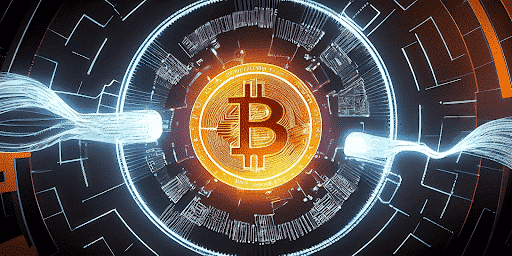There’s been a need for careful governance and design considerations in the quest for a scalable and sustainable blockchain infrastructure. And Bitcoin Spark has emerged as a stronger alternative to Ethereum in this respect.
How to stake Ethereum
Ethereum staking came as a result of Ethereum’s move from a Proof-of-Work (PoW) consensus mechanism to a Proof-of-Stake (PoS) through what was known as The Merge. This transition was aimed at addressing the scalability issues that PoW systems face. In a PoS system, validators are chosen to create new blocks and validate transactions based on the number of coins they hold and are willing to stake as collateral rather than by solving complex mathematical puzzles, as in PoW. To stake Ethereum, you need to have a minimum amount of 32 ETH and run a compatible staking node. You can also opt to use a staking service provided by various platforms.
The move to PoS did address some of the scalability issues related to PoW, such as the energy and time used for block confirmation. However, there are still concerns with this system since small holders may need help to compete with those with significant amounts of ETH, leading to a concentration of power and influence in the hands of a few individuals, compromising on decentralization.
What is Bitcoin Spark?
Bitcoin Spark is a new Bitcoin fork that aims to solve its predecessor’s limitations while carving out a distinct path for itself.
The Bitcoin Spark network offers faster and more cost-efficient transactions than traditional blockchain networks. It also offers a more scalable platform for building smart contracts and decentralized applications (dApps) through its multiple-layered design.
Bitcoin Spark is currently in its Initial Coin Offering (ICO) stage, offering investors a chance to get BTCS before the network’s official launch. The project’s team has allocated 19.05% of its maximum supply of 21 million to the ICO. BTCS will launch at $10 but is currently selling BTCS at $2.25, accompanied by a 10% bonus in Phase 4 of the ICO.
How to mine Bitcoin Spark
The Bitcoin Spark network introduces a novel consensus mechanism known as Proof-of-Process (PoP). The PoP combines elements of Proof-of-Stake and Proof-of-Work, requiring miners/validators to provide a stake and processing power to the network in order for them to confirm blocks and earn rewards. Bitcoin Spark combines the PoP with an algorithm that exponentially reduces rewards per additional stake and processing power to ensure rewards can be distributed more fairly between smaller and larger network participants. This, combined with a massive number of network nodes, allows Bitcoin Spark to have a greater number of miners/validators.
The Bitcoin Spark development team will launch the Bitcoin Spark application before making the network’s repository public for developers to create their own mining software. To mine BTCS, you will need to install the application and grant it access to your device’s processing unit. The app will be lightweight and compatible with Windows, Android, iOS, Linux, and Mac OS. Once granted access, the application will create a virtual environment separate from the device’s operating system functions to ensure security. Miners will be able to choose the number of device resources permitted for mining use, although the app itself can automatically adjust itself to the resources it can use on the device to account for overheating, battery life, and simultaneous usage requirements.
The miners/validators’ contributed power will be rented to organizations and individuals requiring significant amounts of remote computational power. Those using this service will be required to pay with BTCS, providing a unique real-world application for the Bitcoin Spark ecosystem. Unlike PoW and PoS systems, Bitcoin Spark miners/validators will be rewarded with newly minted BTCS coins, transaction fees, and income from renting out their processing power.
Bitcoin Spark’s approach greatly reduces the power and work required for mining. This promotes true decentralization by opening up the validation process to many more individual miners while increasing the blockchain’s security.
Conclusion
Bitcoin Spark’s focus on energy efficiency, scalability, sustainability, and inclusivity in its validation process positions it as a better alternative.
For more on Bitcoin Spark:
Website: https://bitcoinspark.org/
Buy BTCS: https://network.bitcoinspark.org/register
Subscribe to our daily newsletter!
No spam, no lies, only insights. You can unsubscribe at any time.



![Top 5 Cryptos to Buy in October 2024 – KAS, SOL, ADA, CYBRO, NEIRO [Updated List]](https://www.crypto-news-flash.com/wp-content/uploads/2024/09/unnamed-23-450x252.jpg)
